Stevens 315 Side-by-side Shotgun – Overview of an American Classic
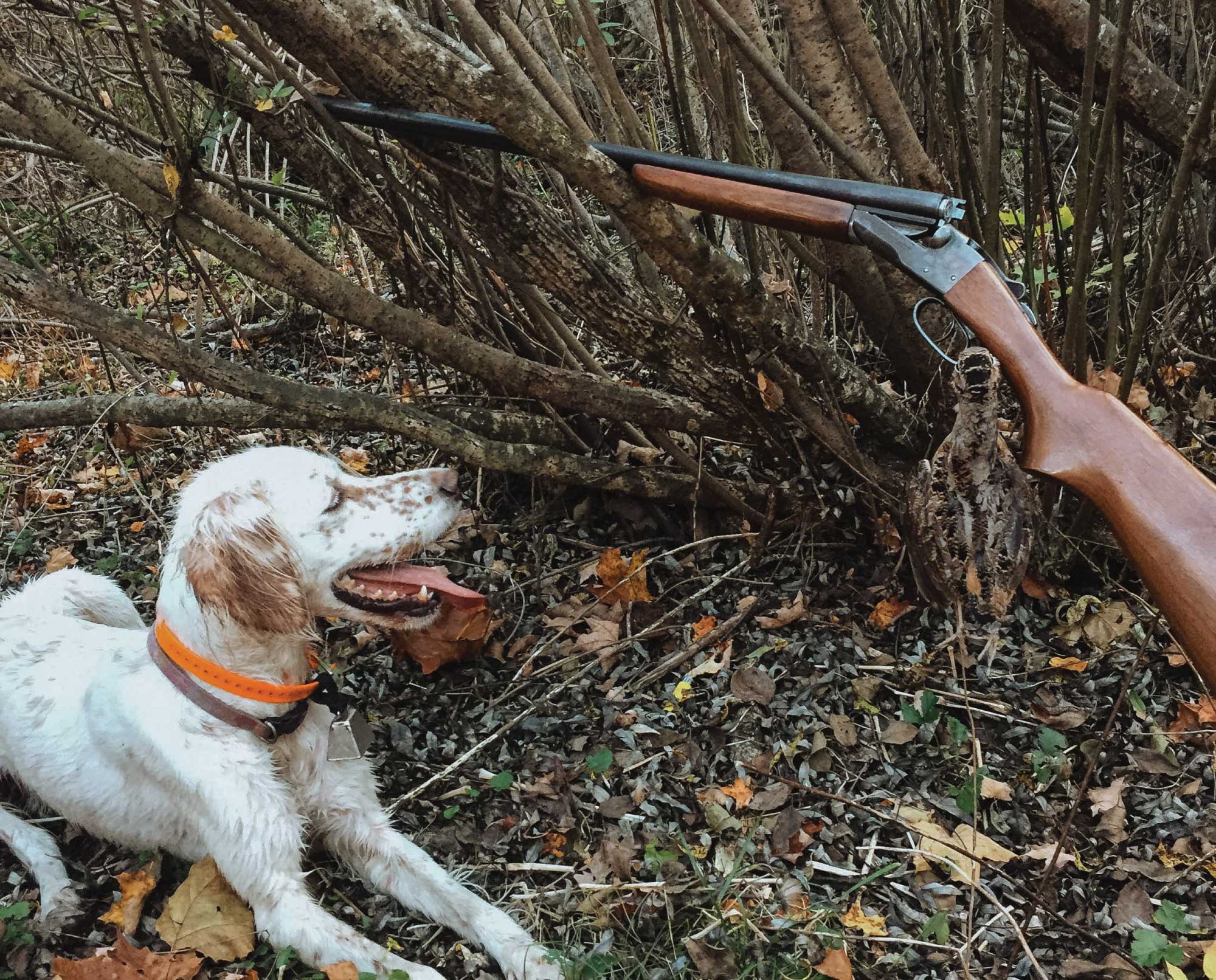
A look back at the Stevens 315 side-by-side shotgun
“It’s just an old Stevens, nothing special,” I said, when asked about the gun. I have to admit, the metal two-gun Americase I was traveling with was likely worth more than its contents. But then again, humans have a penchant for assigning value to inanimate objects, not based on outright cash price, but rather based on sentiment, history, or perception. I was at Grouse Camp in Minnesota, with folks who were sporting Parkers, Foxes, AYAs, and I remember defending the gun, while feeling a bit ashamed. It was no fault of theirs by any stretch, and it was certainly not the first time I felt like I needed to defend my little 20-gauge.
A brief history of the Stevens 315
Stevens Arms was established in the late 1800s in Chicopee, Massachusetts, and by the year 1920 was bought out by Savage Arms Company as we know the brand today. More recent shotguns and commonly known Savage offerings in this line are the Stevens 555 and the Stevens 555E.
The Stevens 315 is a hammerless side-by-side shotgun in a boxlock design. There were two production versions of this shotgun: the original from 1910 to 1939, and then a second higher production model from 1935 to 1959. It was made in .410, 28-, 20-, 16-, and 12-bore. The original price on this shotgun was around $17.
The Stevens 315 is actually a pretty difficult vintage side-by-side shotgun for collectors to track down for purchase these days, with a vast range in price from $100 for unworking models, to around $500 for one in working order. In some cases restored guns and restocked can fetch as much as $1200 to $1400. This certainly ads to the nostalgia of this classic American shotgun.
Falling in love with a Stevens 315 shotgun
In New Jersey, the first things we have the opportunity to chase in the fall are rails. The little 20-gauge Stevens has counted coup on more rails than I will admit here. I have spent many September 1st’s wandering across the seemingly monotone salt marsh near Tuckerton searching for Clapper rails. And come mid-month, I am on a rail skiff, pushing through the wild rice on the Delaware Bay, shooting Sora. Every year the little Stevens is in my hands. The rail guides who push the skiffs always ask what gun I am shooting, and without fail I respond, “Nothing special, just an old Stevens.” I never had to worry about shooting steel through the old gun, or about salt water corrosion. I would give her a good cleaning after each trip, and put her up on the rack hoping that no additional damage was done. Even if there was though, I could always justify it. After all, it’s just an old Stevens.
I saw it for the first time sitting on a table, off to the side, at a gun show in Wind Gap, Pennsylvania. “Couldn’t be worth much,” I thought, though I would have paid a king’s ransom. The stock was cracked beyond repair, bluing mostly worn off the barrels, but it caught my eye. You see I had never owned a side-by-side.
I grew up shooting single barrel guns, mostly Remington 870 pumps and semi’s. But as I got older and guns became more and more of a fascination for me, I started to yearn for a side-by-side. I had read enough Gene Hill and George Bird Evans and seen enough Lassell Rippley and A. B. Frost prints to know that if you hunted birds, you shot a side-by-side.
I don’t recall if there was a tag on the gun, and in truth it didn’t much matter. For me, it was nearly priceless just for the opportunity to wrap my hands around a side-by-side, and a 20-gauge to boot! We haggled for a few moments, but the gun was coming home with me regardless. Truth be told, he could have gotten more out of me, but perhaps he could see the gleam in my eye and knew the gun was going to a good home.
Upon first inspection it was clear that a full strip and clean was necessary, and from the layers of old grease and tarnish, the gun needed it. Once reassembled, the next issue to address was the stock—or lack thereof—as the current piece of timber was cracked beyond repair and short enough that Peter Dinklidge could shoot it effectively. In any case, I was able to obtain a replacement from Boyds, fit it up, and lay on some coats of finish. It was far from matching the forend, but would make the gun functional, which suited me fine.
I do remember having a tough time at first setting aside my Remington. I had never looked down side-by-side barrels and the sight picture threw me off. Being somewhat proficient with my auto-loader, the thought of missing birds as a result of swapping guns was one that I had to overcome, both in my mind, and in the field. The gun was heavy by 20-gauge side-by-side standards, but with 28-inch tubes it swung well. Somewhere along the line, a previous owner had seen fit to open up the shotgun chokes. A wedge-type choke gauge would fall to the 16-gauge mark (or so) on the right barrel, and stop slightly before the 20-gauge “skeet” designation on the left. When asked about choke constriction I took to answering, “open and opener.”
Eventually I did start hitting with the gun, though I was still not comfortable with two triggers. I can remember hunting in the Fire Swamp one opening day of pheasant season. It was late for flights of woodcock, but was the first day we could shoot pheasants in New Jersey. I like this particular cover as it is too thick, nasty, and wet for other hunters, and as a result generally holds birds. I finished up this solo hunt with three American woodcock and two roosters, all shot with the first barrel for the simple fact that I was not able to get off a second shot. It is something of an anomaly watching your quarry wing away after blowing your first chance, knowing you have a second shot but not being able to make your hand do what your mind is telling it. You stand there dumbfounded, repetitively pulling the front trigger, desperate for a second shot, wondering why it never comes. Trust me; I know. The difficulty of switching to the back trigger was so hard to overcome that I believe it significantly improved my shooting. I felt like I had to make my first shot count, because the likelihood I would have a second was nearing zero.
Many years and likely a few hundred rounds later, the gun came with me on another opening day that remains a standout in my memory. The opening of pheasant season coincides with the end of woodcock season in New Jersey. Dad and I struck out on a frosty November morning at our favorite riverside cover, “The Inn,” looking for pheasants. Needless to say, in short order our English setters had pointed four pheasants, enough to fill our limit, and a bonus bird—a single straggler woodcock that had lit in one of the hedgerows overnight.
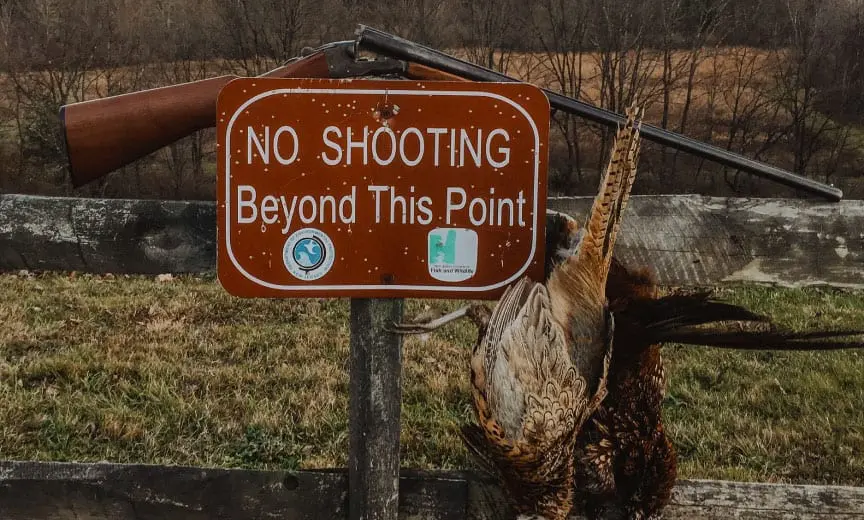
It being the last day of the woodcock season and having what we considered an already lucky day, we opted to try a cover where there would be no other pheasant hunters around. We struck out in the mid morning sun as the day warmed, like only a November Saturday can. Our hunch was spot on, and in less than an hour we were able to bag four additional woodcock, leaving only one more to go to top off our limits for the day. Hitting our limits on an opening day would be an impressive feat in itself, but before the last point of the day, I realized that Dad and I had killed each bird that day with a single shot, no misses. The final shot was mine, and the old Stevens did not let me down. I cannot recall another time in my years of hunting that my father and I and the dogs worked so well together, certainly not one where we had 10 points and 10 birds fell to 10 shots.
Like all good things, my time with the gun would eventually have to come to an end—though I believe it is the best end I could imagine. I now have a livery of double guns and the Stevens needs to go to a new home. And I know just the place. My good friend, currently living in Alaska, has never owned a double gun. I am sending it to him knowing that he will give the gun a good home. Perhaps his newborn son will someday carry it into the wild when he is old enough. And maybe, one day, our two sons will be talking about the dogs, birds, and guns they have known and they can swap stories of their own about the little Stevens 20-gauge side-by-side.
Chris,
I love you like a brother. There is nothing that I can say other than thank you. This trip, the time we had, the adventure—I am not sure that I would have ever seen Alaska, but I certainly would have never been able to experience what we had, if not for you. I am not very good at expressing emotion, a fact that Jazz has made me aware of, and as a result I am working on it. Thank you. Thanks for having me up to Alaska, thanks for sharing your hunt with me, thanks for being you. I was trying to figure out what I could do for you in return. Nothing seemed adequate until I thought of this gun. It was my first side-by-side shotgun. I have carried it for years. I could tell you 100 stories of times I carried it in the woods. Grouse, woodcock, pheasant, quail, chukar, huns and rails that have fallen before it. I want you to give it new life and take it on its next journey. Truth be told, I want Harry to have it some day, and maybe if the stars line up, Harry can tell Jack about it as our boys wander the woods like we did. Maybe we can make a legacy, make our own tradition, wrapped in wood smoke, the smell of burnt powder and good whiskey, good friends and the outdoors. When you said that upland hunting, upland writing, is full of memories and nostalgia, you couldn’t be more spot on. I am just happy that the best of MY memories of the uplands are with you.
Joel P.
SUBSCRIBE to the AUDIO VERSION for FREE : Google | Apple | Spotify
ProjectUpland.com On the Go is brought to us by: ESP – Digital Hearing Protection



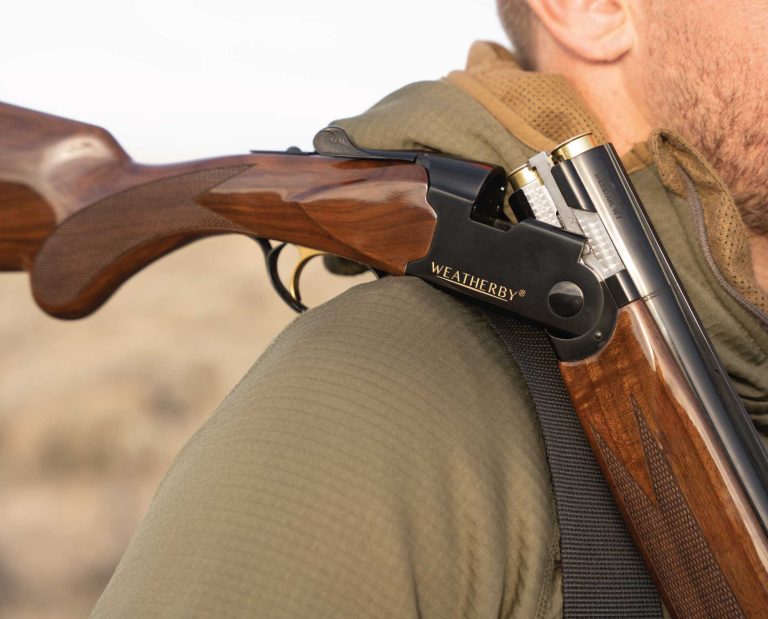
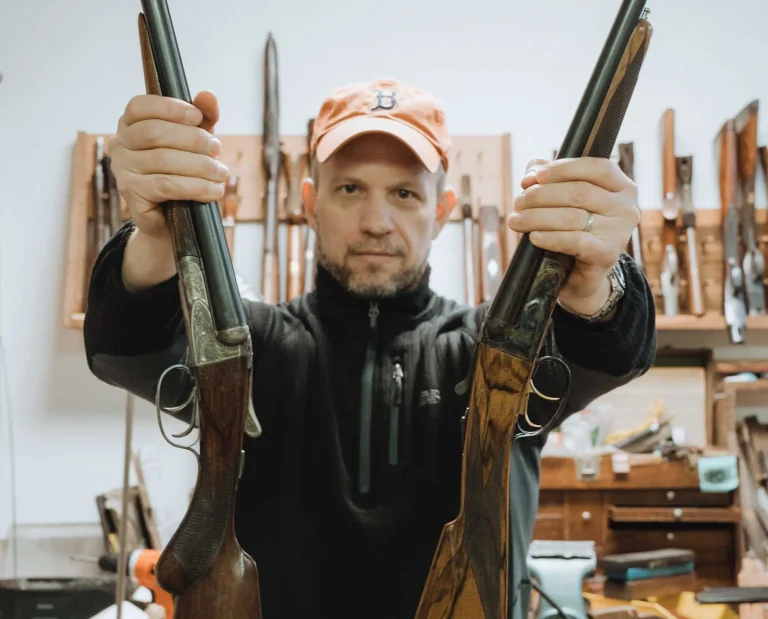
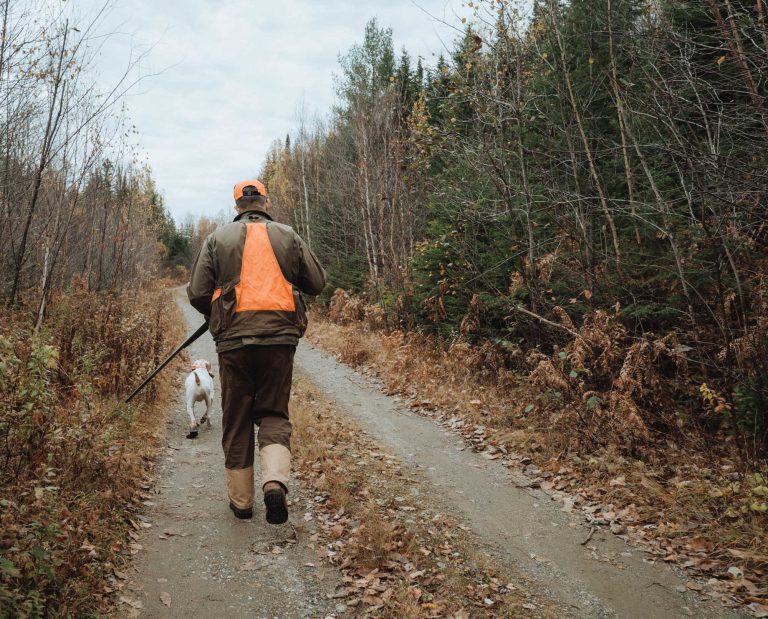

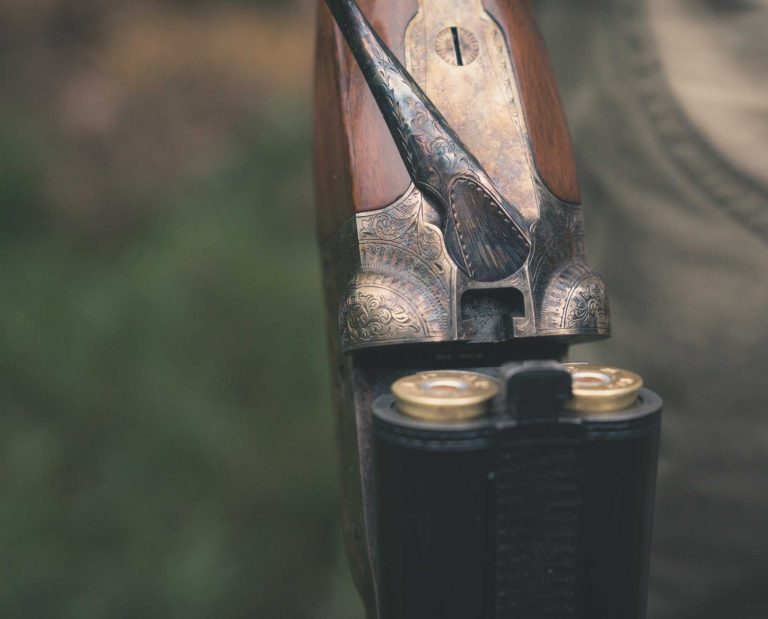

Wow, great piece, i have one that i grabbed in a gunshop. It is beautiful barely worn 16 ga. no serial number (they were not required until 1968) It shoots great it was under 200 bucks! I love it, I bought it for a good friend who wanted a nice sxs but he passed before I could give it to him. I have my dad’s 16 ga. sxs Hunter arms,Fulton Special (engraved with bobwhite and woodcock) and was blessed by finding a L.C. Smith 16 ga. sxs made in 1941. I think the L.C. was unfired,,,It is a rare gem! great stuff,,thank you
My first gun, given to me by my dad, was a Stevens .410 double. I got my first rabbit and many others with it, plus several squirrels. Such a great gun! Thanks for a good story about this “old Stevens.” It brought back several memories.
I bought one from my friend and shortly after cleaning it, one of the hammers broke off. Do you think the old metal is still weldable? I will see it to you if you know someone who can repair it.
I have a ranger 20 gauge which is actually a Stevens 315. What is the choke on these and are they 2 3/4″ bore?